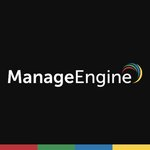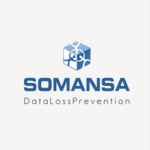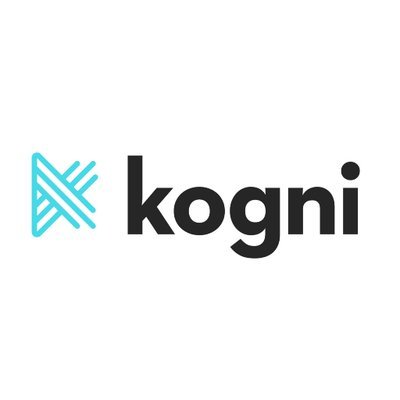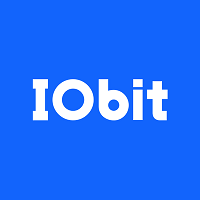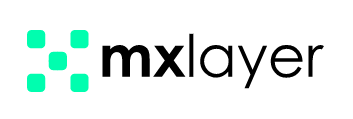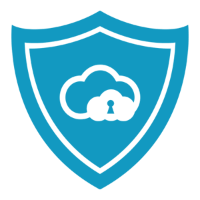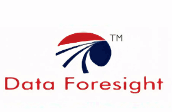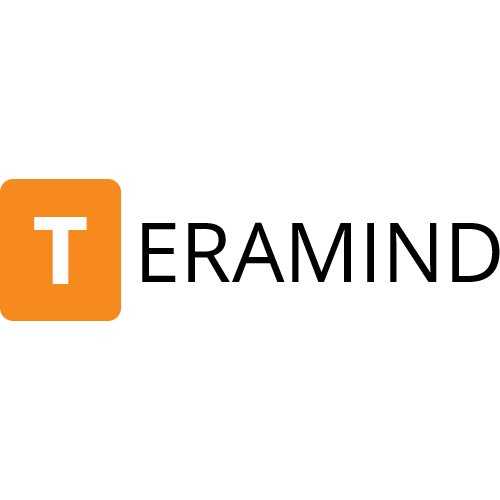What Is Data Loss Prevention Software?
One essential tool that helps businesses prevent unauthorized people from accessing, using, or sharing sensitive and private data is data loss prevention (DLP) software. This kind of software monitors, categorizes, and controls data using a variety of technologies and tactics to stop data breaches, leaks, and illegal access.
Identifying and categorizing sensitive data, including social security numbers, credit card numbers, and other personally identifiable information, is one of the main purposes of DLP software. A variety of methods, such as file fingerprinting, pattern recognition, and keyword matching, are used to accomplish this. After identifying this sensitive data, the software may track its usage while it's moving, stationary, or in use.
Apart from data monitoring, DLP software can also impose rules and policies that control how sensitive data is used. This may entail preventing private information from being printed, transferred by email, or even copied to portable electronics. Additionally, DLP software has the ability to restrict access to sensitive data, allowing only particular persons or devices to access it. The capability of DLP software to monitor and secure data in many places is another crucial aspect.
This covers information kept on staff devices as well as servers, databases, and cloud apps. As remote work and BYOD (bring your own device) regulations become more common, DLP software is essential for preventing sensitive data from being accessed on personal devices or leaked. Additionally, DLP software offers reports and real-time alerts on any unauthorized or suspicious behavior involving sensitive data.
This enables businesses to recognize any security threats and act quickly to reduce them. The kinds of data that a DLP program can monitor, the degree of customization and flexibility it provides, compatibility with current systems, and its overall efficacy in safeguarding sensitive data are all significant considerations when selecting one.
What Are The Recent Trends In Data Loss Prevention Software?
For businesses of all sizes, data loss prevention (DLP) software has become a crucial component of cybersecurity plans. The need for DLP solutions has been growing due to the growing risk of data breaches and cyberattacks. We will go over the latest developments in DLP software in this guide to assist purchasers in making wise choices for their companies.
1. Cloud-Based DLP Solutions: The move to cloud-based solutions is one of the biggest developments in DLP software. The need for DLP solutions that can safeguard data has grown as more companies shift their data to the cloud. Cloud-based DLP is a popular option for businesses because it provides scalability, automatic threat response, and real-time monitoring.
2. Artificial Intelligence And Machine Learning: These two technologies are transforming the field of preventing data loss. These technologies give DLP software the ability to recognize and categorize sensitive data, spot irregularities and possible dangers, and enhance its detection capabilities over time. DLP solutions are becoming more effective, precise, and threat-adaptable with the application of AI and ML.
3. User Behavior Analytics: The application of user behavior analytics (UBA) is another new development in DLP software. UBA analyzes user behavior patterns and identifies any unusual or dangerous activity using machine learning algorithms. It assists companies in identifying and averting insider attacks, which are turning into a significant data security risk.
4. Integration With Other Security Solutions: DLP software is now being integrated with other security technologies, including cloud security, network security, and endpoint protection, rather than being as a stand-alone solution. Better data visibility and management are made possible by this integration, which also closes security gaps and extends protection beyond the perimeter.
5. Compliance And Regulatory Requirements: Businesses now place a high premium on compliance as a result of the CCPA, GDPR, and other data privacy laws. DLP software offers data discovery, monitoring, and reporting features that assist firms in adhering to these rules. Integrating compliance management tools into DLP solutions is the newest trend, which helps firms manage and uphold compliance.
Benefits Of Using Data Loss Prevention Software
DLP software, or data loss prevention software, is an essential tool for companies trying to safeguard sensitive information from theft, loss, or illegal access. Regardless of the device or network being used, it provides a number of features and advantages that assist enterprises in guaranteeing the security and integrity of their data. The following are some of the main advantages of DLP software use:
1. Reduces The Danger Of Data Breaches: In the current digital environment, organizations run the risk of losing sensitive data due to the prevalence of data breaches. By offering cutting-edge security features like encryption, access controls, and data monitoring to stop unwanted access to vital data, DLP software helps reduce this risk.
2. Preserves Private Information: Trade secrets, financial information, and customer records are examples of private information that is essential to any business. By identifying, classifying, and preventing unauthorized persons from accessing or sharing sensitive data, DLP software helps businesses reduce the risk of insider threats and unintentional data leaks.
3. Assures Regulatory Compliance: In today's data-driven business environment, adherence to industry rules and data protection legislation is crucial. By keeping an eye on data usage, enforcing policies, and producing audit logs that can be used to prove compliance, DLP software can assist firms in meeting regulatory obligations.
4. Lowers Financial Losses: Because of the expenses of cleanup, legal fees, and reputational harm, data breaches and leaks can cause large financial losses for companies. By offering proactive steps to stop data loss, DLP software helps reduce these risks and can shield businesses from expensive legal action and harm to their brand.
5. Centralized Control: Businesses may find it difficult to manage and secure sensitive data as cloud-based solutions and remote work become more popular. DLP software provides centralized control, enabling businesses to keep an eye on and safeguard data across many networks and devices, giving clients and staff a smooth and safe experience.
Important Factors To Consider While Purchasing Data Loss Prevention Software?
To make sure you are choosing the best option for your company, there are a number of crucial variables to take into account when buying data loss prevention software.
1. Determine Your Particular Needs: Finding out what your company needs is the first step in buying DLP software. This entails being aware of the kinds of data you wish to safeguard, as well as how and by whom it is accessed. This will assist you in identifying the software's features and functionalities that best meet your needs.
2. Assess Integration And User-Friendliness: It is essential to take into account the DLP software's integration capabilities and ease of use while choosing it. Your staff will be able to utilize the software with ease if it has an intuitive user interface. For seamless protection across all of your data sources, the software should also be able to interface with other security solutions and your current systems.
3. Take Compliance Rules Into Account: Regulations pertaining to compliance differ based on your company's region and industry. Researching the relevant regulations is crucial, as is making sure the DLP software you select complies with them. In addition to reducing possible legal issues, this will guarantee that your data is safeguarded in compliance with industry norms.
4. Flexibility And Scalability: Your data will expand along with your business. Consequently, it is essential to spend money on DLP software that is adaptable and scalable enough to accommodate your future requirements. As your data and organization change, you will be able to add additional capabilities and broaden the protection.
5. Options For Deployment: DLP software can be set up as a hybrid system, on-premises, or in the cloud. To choose the best deployment solution for your company, it is critical to assess the IT infrastructure and security requirements of your corporation. When making this choice, take into account elements like budget, remote work, and data sensitivity.
6. Cost And Assistance: Particularly for small businesses, DLP software can be costly. The entire cost of ownership, including any extra charges for upkeep and support, must be taken into account. Examine the costs offered by various suppliers and consider the caliber and extent of their customer service. To sum up, investing in DLP software is an investment in safeguarding the vital information of your company. By taking these things into account, you can make sure that the solution you choose satisfies your requirements, is user-friendly, and offers strong data protection. Before choosing a course of action, don't forget to do extensive study and weigh your options.
What Are The Key Features To Look For In Data Loss Prevention Software?
To make an informed choice, you should take into account a number of important factors when buying Data Loss Prevention (DLP) software. The following are the most important characteristics of DLP software:
1. Real-Time Scanning And Monitoring: DLP software should be able to scan and monitor all network traffic in real-time, including data that is at rest, in motion, and in use. This guarantees that any possible data leaks or breaches are found right away, enabling prompt response.
2. Data Categorization And Discovery: Sensitive data should be automatically analyzed and categorized by a good DLP system using pre-established policies. This makes it simpler to identify and safeguard important data, such financial or personal information.
3. Granular Control And Policy Management: Establishing and overseeing policies that specify how data is handled and distributed inside your company is essential. Seek out DLP software that has fine-grained, adjustable controls to suit your unique requirements.
4. Adaptable Deployment Options: Whether your company wants an on-premise, cloud-based, or hybrid implementation, DLP software should be able to change to meet its demands. Evaluate your needs and select a solution that provides the best option for deployment.
5. Integration With Current Systems: Firewalls and SIEM systems are examples of the security architecture that your DLP solution should easily interface with. This guarantees a unified and effective security plan.
6. User-Friendly Interface: Because DLP software might be complex, it's critical to select a system that provides simplified data reporting and an intuitive user interface.
7. Data Protection And Encryption: To safeguard private information whether it's in transit or at rest, look for DLP software that provides robust encryption. This provides an additional degree of protection and guarantees that data is safe even in the event that it ends up in the wrong hands. 8. Detailed reporting: A quality DLP solution need to offer thorough information on security incidents, policy infractions, and data usage. This information is essential for pinpointing weak points and enhancing your data security plans.
9. Constant Updates And Support: Since data security is a constant worry, it's critical to select a DLP system that provides constant updates and support in order to stay on top of new threats and evolving compliance requirements.
10. Scalability: Your company's data security requirements will expand along with it. To ensure long-term efficacy and value, it is crucial to choose a DLP solution that can grow with your company. You can make sure you select the best DLP software for the unique data protection requirements of your company by taking into account these important elements. Before deciding, don't forget to carefully consider your needs and properly investigate other options.
Why Do Businesses Need Data Loss Prevention Software?
Businesses rely significantly on technology to store and manage their data in the current digital era. However, it is now essential for organizations to have safeguards in place to prevent the loss of sensitive data due to the rising frequency of cyberattacks and data breaches. Software that prevents data loss is useful in this situation.
A specific security solution called data loss prevention software is made to prevent private and sensitive information from being read, copied, or sent without the required authority. In order to stop data loss or leakage, it continuously monitors and analyzes data flows, spots any threats, and enforces security policies. Businesses may guarantee the protection of their financial data, customer information, intellectual property, and other vital assets by putting data loss prevention software into place.
This helps them adhere to several industry rules and data privacy laws in addition to protecting their credibility and brand. Furthermore, sophisticated features like encryption, user access controls, and data backup are available in data loss prevention software, adding an extra degree of protection against data loss brought on by hardware malfunctions, natural disasters, or human mistake.
Data loss prevention software can enhance business productivity and efficiency in addition to data security. Businesses can detect possible data threats and operational inefficiencies by tracking and monitoring data usage. This enables them to improve performance by optimizing their procedures and implementing remedial measures.
All things considered, companies of all sizes and sectors must invest in data loss prevention software to safeguard sensitive information, adhere to legal requirements, and keep a competitive edge. A user-friendly interface, connectivity with current systems, and the ability to modify security settings are all important considerations when selecting the best data loss prevention software for your company.
How Much Time Is Required To Implement Data Loss Prevention Software?
A number of variables, including the size and complexity of your company, the data security procedures in place at the moment, and the particular software being used, might affect how long it takes to adopt data loss prevention software. The procedure can take a few weeks to several months on average. Assessing your present data security procedures in-depth and identifying any potential weaknesses is the first step in putting data loss prevention software into place.
This could entail examining your company's data security rules and performing a risk assessment. The next step is to choose the best data loss prevention software for the requirements of your company. This could entail assessing several suppliers, contrasting features and costs, and making sure the program works well with your current setup.
Installing and deploying the data loss prevention software is the next step after selecting it. Setting up and configuring the software in accordance with the requirements of your company may include collaborating with the vendor or a specialized implementation team. Implementing data loss prevention measures successfully depends on your staff members being trained on how to utilize the program.
Developing user manuals, holding training sessions, and offering continuing assistance and resources could all be part of this. Lastly, continuous maintenance and monitoring are essential to guaranteeing the efficacy of data loss prevention software. This could entail testing and performance evaluation of the system on a regular basis, along with frequent updates and upgrades.
All things considered, the installation procedure could take a lot of time and money, but it is necessary to safeguard the private information of your company. Purchasing top-notch data loss prevention software and adhering to a rigorous implementation procedure are essential for preserving the privacy, availability, and integrity of your data.
What Is The Level Of Customization Available In Data Loss Prevention Software?
Different degrees of customisation are available in data loss prevention software to meet the particular requirements and tastes of various businesses. Businesses can frequently alter different features of the program, including reporting, data classification, and policy rules, depending on the particular software supplier. Organizations can adapt the program to their industry, regulatory needs, and data protection plans by using customization options.
Businesses can develop a more individualized and efficient data loss prevention solution by personalizing the software. Creating policy rules that specify how the software should handle sensitive data is one way to customize it. These guidelines can outline whether data should be encrypted, censored, or monitored as well as how the program should react in the event of a data breach.
Organizations may fine-tune their data protection and make sure the software complies with their specific security standards thanks to this degree of flexibility. Data classification is another facet of customization. With the use of this tool, businesses may group their data according to how sensitive it is, establishing varying degrees of security and oversight for each category.
Businesses that handle various forms of sensitive data need this skill in order to prioritize and allocate resources appropriately. Another adjustable feature of data loss prevention software is reporting. Companies can select which metrics and data to include in their reports, enabling more individualized insights and well-informed choices.
In order to best meet their requirements and preferences, organizations can also alter the frequency and format of their reports. In general, a data loss protection program can better meet the specific needs of a business the more customization options it offers.
It is advised that companies with particular compliance requirements or data security plans look for software with robust customization features. Sensitive data is better protected because to its ability to enable a more effective and customized data loss prevention solution.
Which Industries Can Benefit The Most From Data Loss Prevention Software?
Any firm that experiences data loss may suffer severe financial and reputational repercussions. For any company handling sensitive or private data, data loss protection software is therefore an essential investment. Nonetheless, some sectors stand to gain the most from this kind of software. The top industries that stand to gain the most from using data loss prevention software will be covered in this buyer's guide.
1. Healthcare: Every day, the healthcare sector handles a significant volume of private patient data. This include financial information, insurance information, and medical and personal records. In addition to causing significant financial losses, data loss in this industry might jeopardize patient privacy. Healthcare companies can protect their data and adhere to stringent privacy laws like HIPAA by using data loss prevention software.
2. Financial Services: A substantial amount of private customer data, such as credit card and banking information, is handled by the financial services industry. In this sector, a data breach can lead to large monetary losses as well as harm to the company's image. Financial institutions can comply with stringent regulatory compliance standards and safeguard the data of their clients by using data loss prevention software.
3. Government Agencies: Government agencies handle extremely sensitive data, such as classified material and national security information. There could be serious repercussions from a data breach in this industry, including jeopardizing national security. Through the monitoring, detection, and prevention of illegal access to vital information, data loss prevention software adds an extra degree of protection.
4. Education: A significant amount of staff and student data, including financial and personal information, is stored by educational institutions. Data loss prevention software is crucial since cyberattacks on the education industry have increased in recent years. It can preserve the integrity of academic records, safeguard private information, and secure sensitive data.
5. Retail: A lot of consumer data, including payment information and personal data, is processed by the retail sector. In this industry, a data breach can result in both monetary losses and a decline in consumer confidence. Retailers can preserve PCI compliance, defend their brand name, and protect consumer data with the aid of data loss prevention software.
Conclusion
In conclusion, any firm trying to safeguard its sensitive data must locate the best data loss prevention software. Purchasing a dependable and efficient DLP solution is now essential rather than optional due to the rise in cyberthreats and stringent data protection laws. Assessing your unique needs and requirements such as the kinds of data you must safeguard, the required level of security, your budget, and compatibility with your current systems is crucial when thinking about a DLP solution.
Selecting a trustworthy and knowledgeable supplier that provides thorough support and frequent upgrades to stay abreast of changing threats is also essential. Organizations may enhance overall data management, compliance, and customer trust in addition to preventing data loss and breaches by putting in place a strong DLP solution.
Given the variety of DLP solutions on the market, it is crucial to carefully consider and assess each choice before choosing one. We hope that this buyer's guide has given you important information and direction to assist you choose wisely for your data protection requirements.

